Blending Bhutan’s traditional craftsmanship with modern innovation, the Gelephu International Airport is strategically positioned near the Bhutan-Indian border and the Paitha River, surrounded by Bhutan’s lush subtropical forests, mountains, and rivers. As Bhutan’s second international airport, the project is a collaboration with aviation engineering firm NACO and an integral part of the Gelephu Mindfulness City (GMC) masterplan designed by BIG, Arup, and Cistri. With the capacity to handle 123 flights daily, it is projected to welcome 1.3 million passengers annually by 2040, increasing to 5.5 million passengers by 2065.
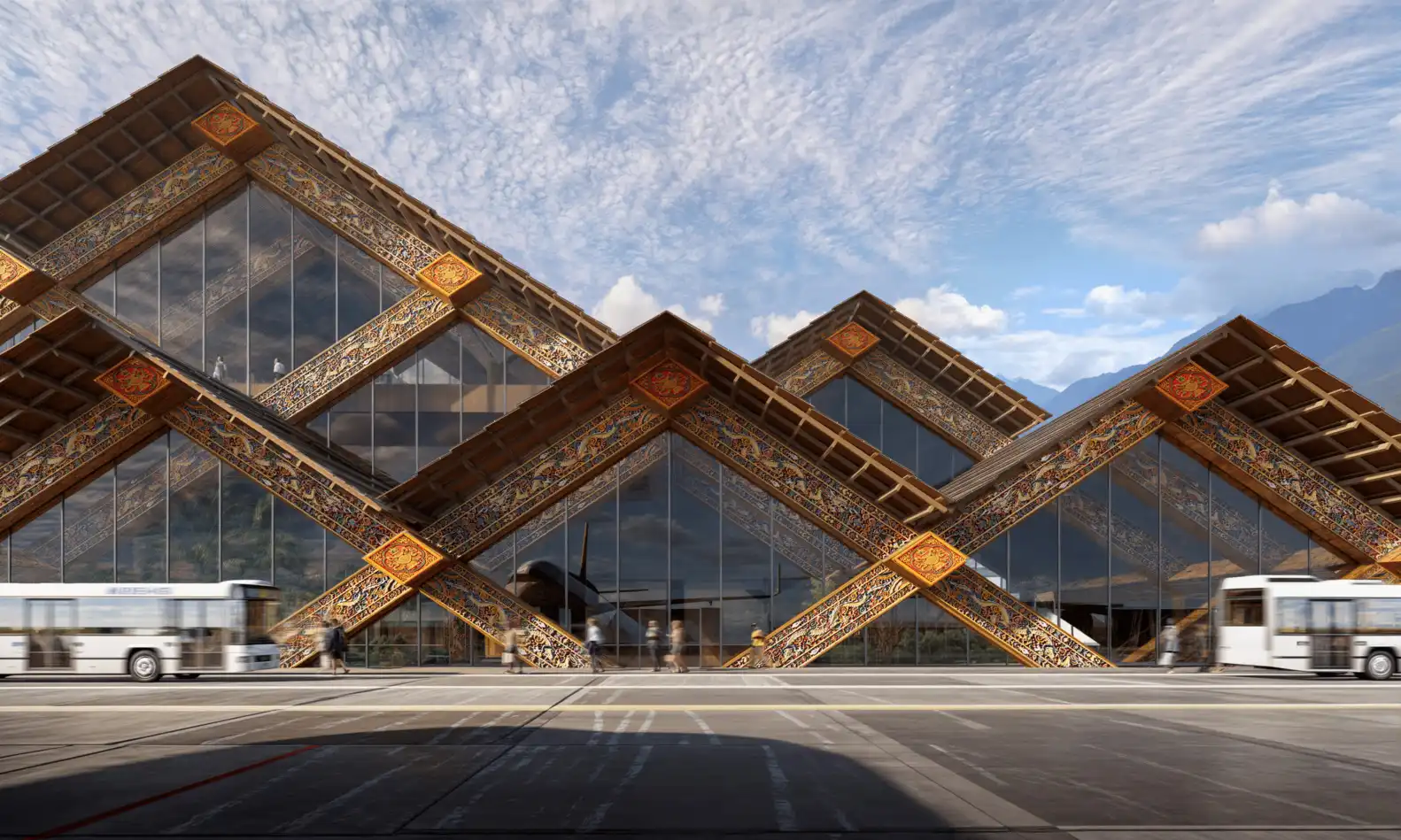
Set against a backdrop of the Himalayas, the airport’s diagrid structure is crafted from locally and sustainably sourced timber and adorned with traditional Bhutanese wood carvings by local artists. The painted façade draws inspiration from the “Kachen, a wooden pillar revered for its structural significance and intricate design, embodying Bhutanese architectural heritage and spiritual symbolism.
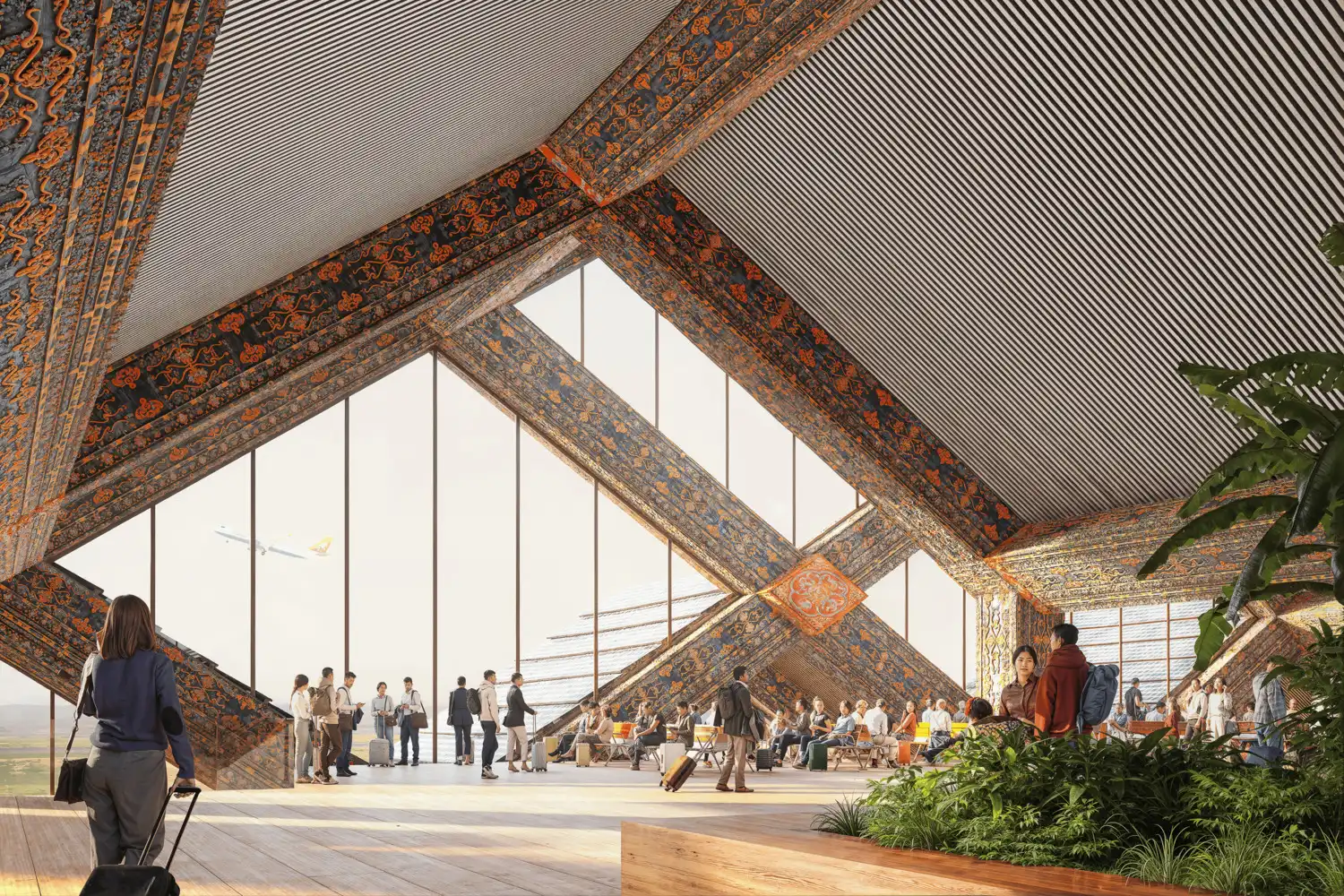
Designed to accommodate GMC’s projected growth, the airport’s timber frames are structurally independent, allowing for simple disassembly for future expansion. The airport’s roof features PV panels, in line with Bhutan’s position as a carbon-negative nation.

“Our immediate priority over the next five years is the construction of a large international airport in Gelephu, which will establish the GMC as a key aviation hub. This airport is essential for the success of the GMC as a business hub, and it is also a critical lifeline for Bhutan’s national security, especially for a landlocked country.” His Majesty King Jigme Khesar Namgyel Wangchuck, King of Bhutan.
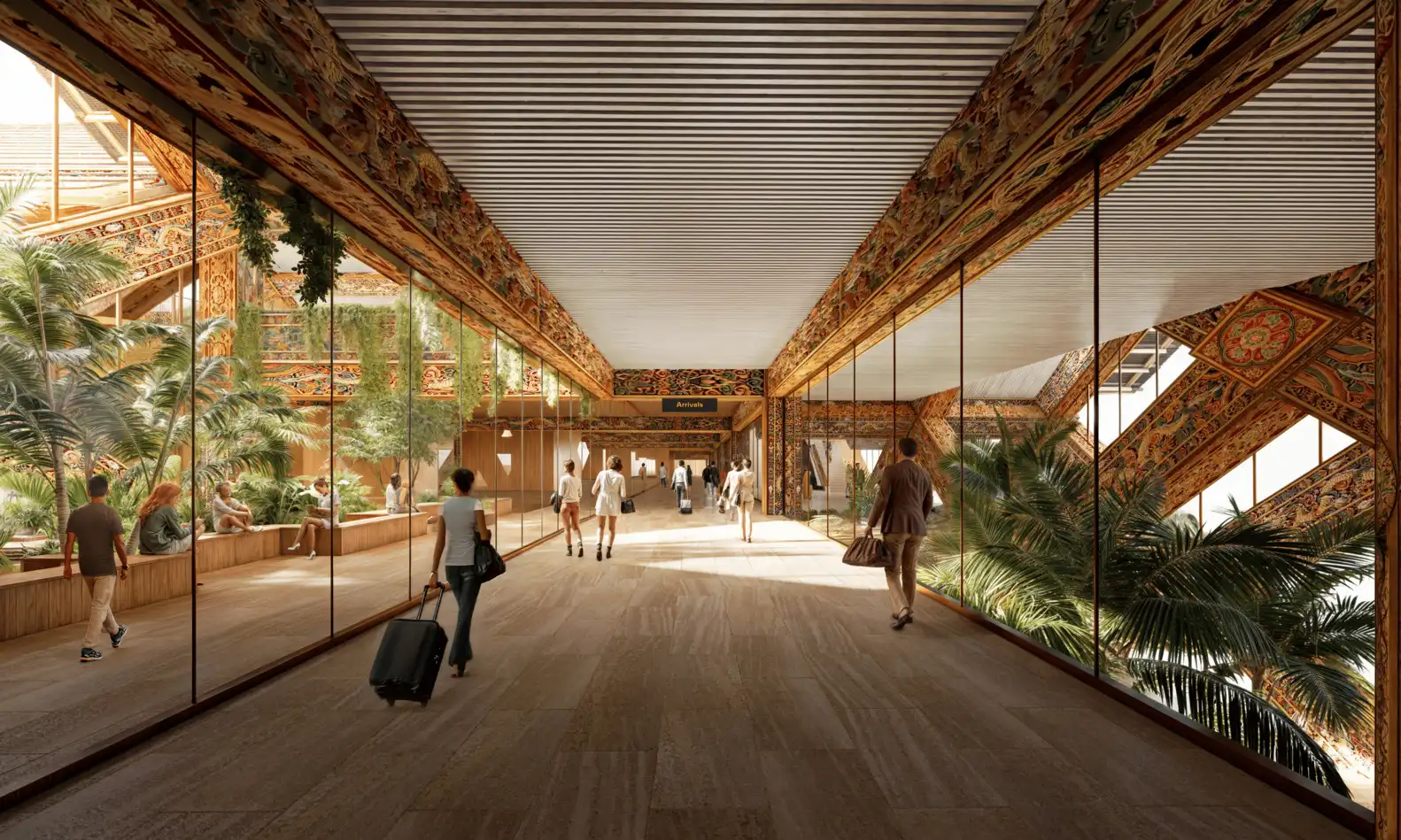
Harmoniously blending into the surrounding natural terrain, the arrival plaza is designed as a series of four zones each dedicated to specific plants found within the forests in Gelephu. A gathering space features paving made from local natural stone and integrated seating areas, while abundant greenery and a canopy provide protection from the elements.
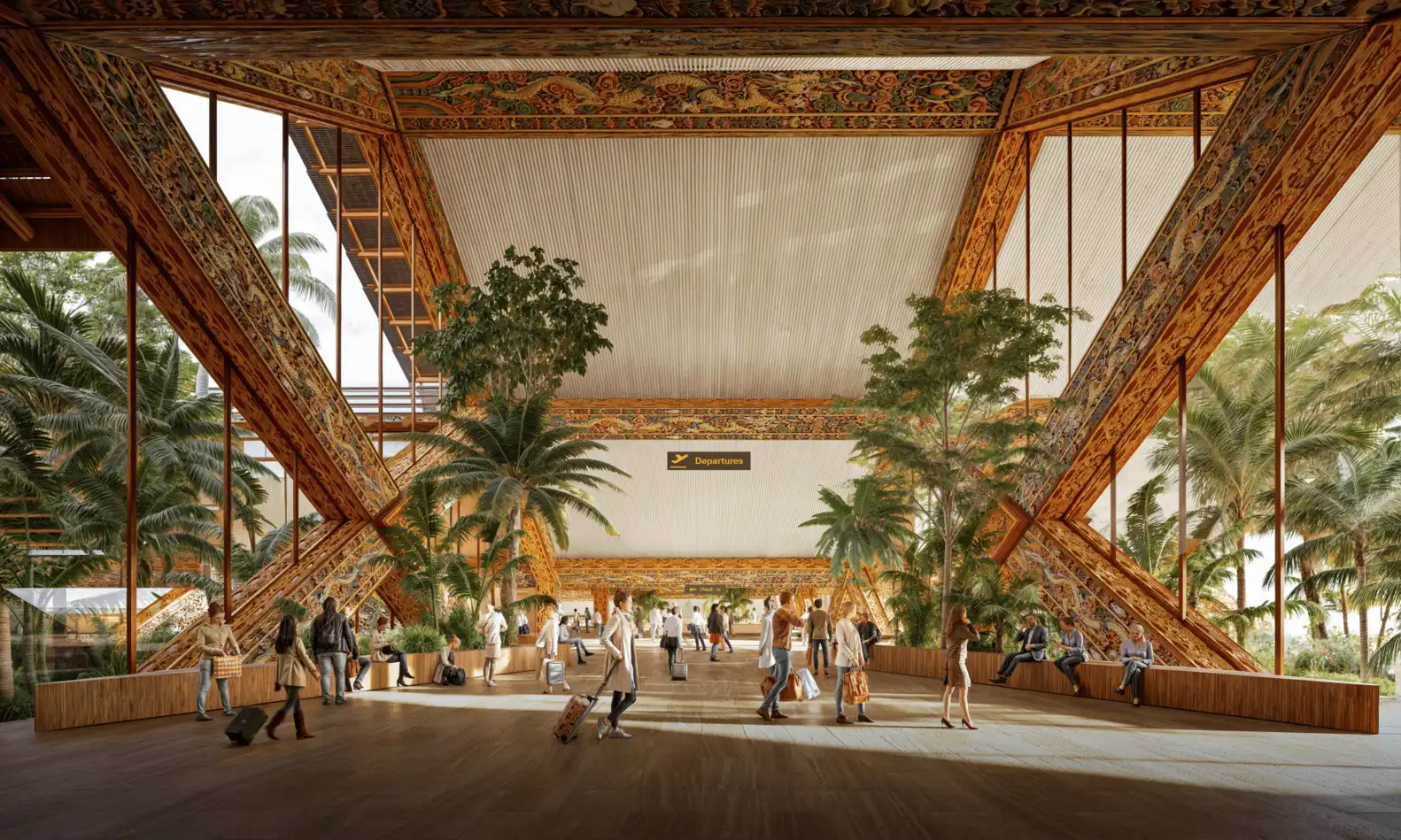
Bhutan’s biodiversity corridors are pulled into the airport and its interior courtyard. Aptly named the Forest Spine, the courtyard divides the terminal into two sections, with domestic flights on the west side and international flights to the east. Visually accessible from anywhere in the airport, the Forest Spine offers passengers a connection to nature even inside the airport, with tranquil green spaces, a treetop walkway, and indigenous fauna.
Every aspect of the Gelephu International Airport is a celebration of Bhutanese culture, showcasing regional craftsmanship, including Shing-Zo (carpentry), Par-Zo (carving), Lha-Zo (painting), and shar-Zo (traditional weaving techniques). The traditional Bhutanese carvings extend from exterior to interior.
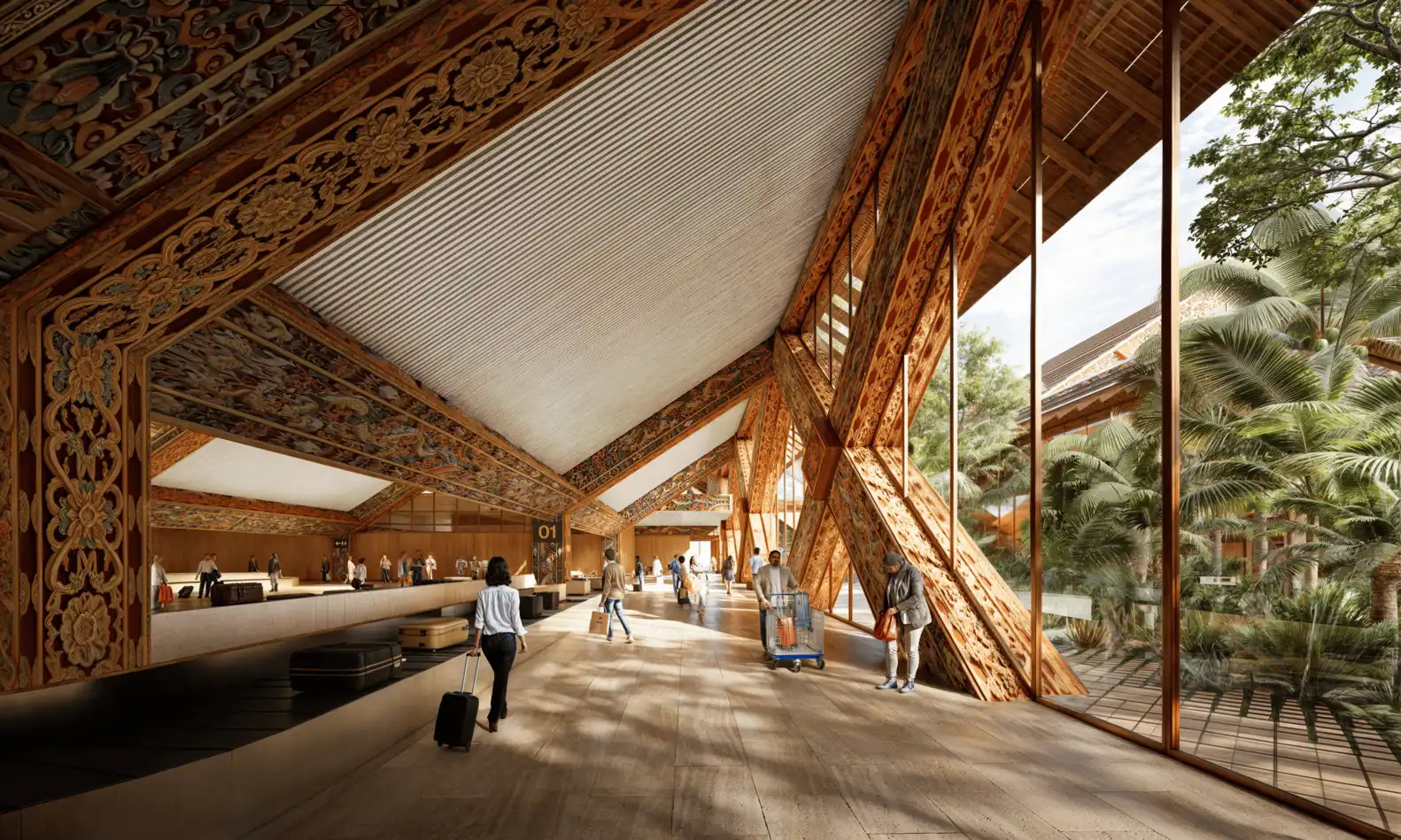
Designed to instill mindfulness into the often stressful experience of traveling, the airport is bathed in natural light, with a grand triple-height entry, expansive floor-to-ceiling windows, and skylights. Indoor and outdoor lounges provide tranquil spaces for yoga, gong baths, and meditation for travelers to recenter and recharge, embodying Bhutan’s values of happiness and psychological well-being.
The Gelephu International Airport’s layout is driven by passenger experience and operational efficiency. Intuitive wayfinding through clear visual cues and thoughtfully designed circulation paths ensures a smooth journey from arrival to gate. Gates are situated on the upper level alongside retail and food and beverage areas, offering expansive views of the apron and the dramatic Himalayan landscape.
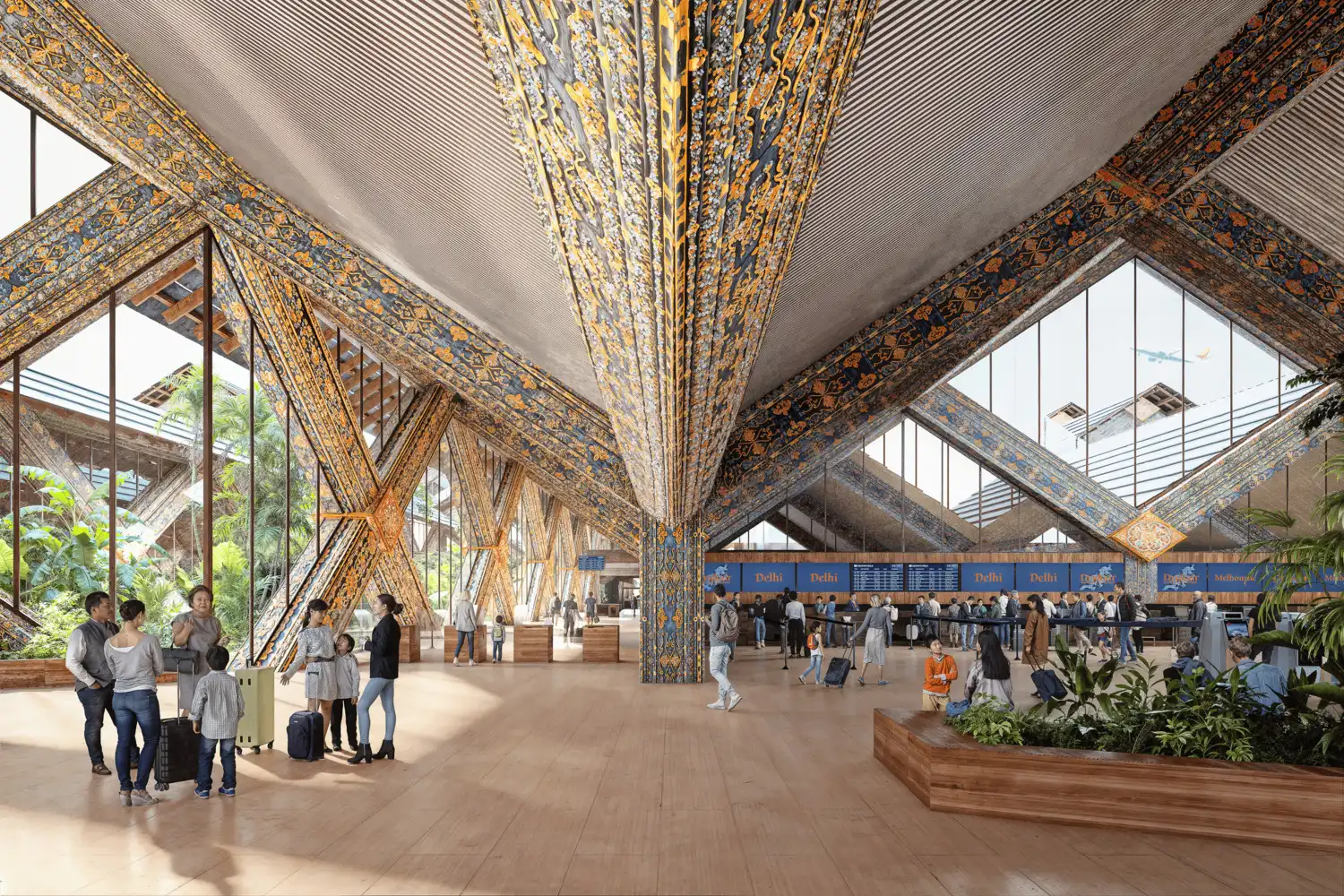
Adapting to the subtropical climate of Southern Bhutan, the airport incorporates climate-responsive, passive designs seen in traditional Bhutanese architecture. Its wooden structure absorbs moisture from the air. Helping to regulate indoor humidity, while ventilated roofs and courtyards encourage natural airflow. Outside, extended eaves provide shade and protect against heavy rainfall. The airport will also become Bhutan’s first in-land mobility hub, promoting the use of public transportation with easily accessible trackless trams and buses that connect to Gelephu’s revitalized town center and the rest of the country.
Grounded in Bhutanese culture, Gelephu International Airport aims to establish itself as a global gateway into GIMC that honors history while embracing the future, creating a welcoming atmosphere that reflects the spirit of GMC at every stage of the journey. The airport is set to open in 2029.
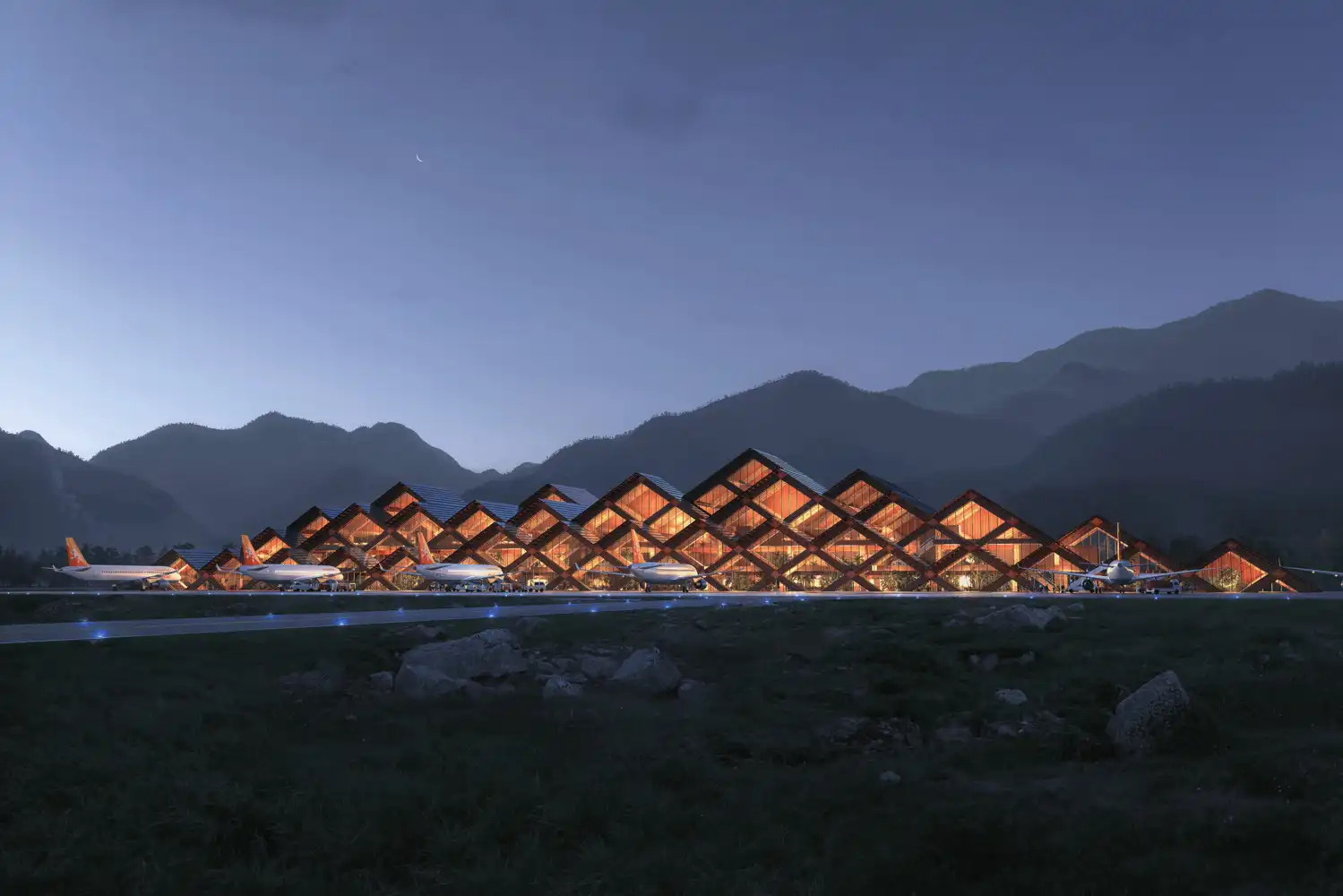
“An airport is the first and last impression you get of a place you visit. For the Gelephu International Airport, we have tried to embody the nature and culture of the country and the Mindfulness City. The forests that cover the highlands are allowed to flow from the arrival plaza through the airport all the way to the tarmac. Tropical trees provide shade for travelers, and the forest courtyard lines the main functions of immigration, security, and luggage. The airport architecture is composed of modular mass timber frames providing flexibility and expandability, resembling a stylized mountain range at a distance. Upon closer inspection, all the mass timber members are carved and colored according to traditional craft, adorned with three types of dragons representing the past, present, and future of Bhutan. The result is traditional yet avant-garde, forward-reaching, and rooted. For me personally, this unusual embrace of traditional craft and color is a nice testament to how affected I have been by my encounter with Bhutan – the country, its culture, and its people.” Bjarke Ingels, Founder and Creative Director of BIG.
Gelephu International Airport Project Details:
Architect: BIG
Client: The Kingdom of Bhutan
Typology: Infrastructure
Size: 68,000 sqm
Status: In design




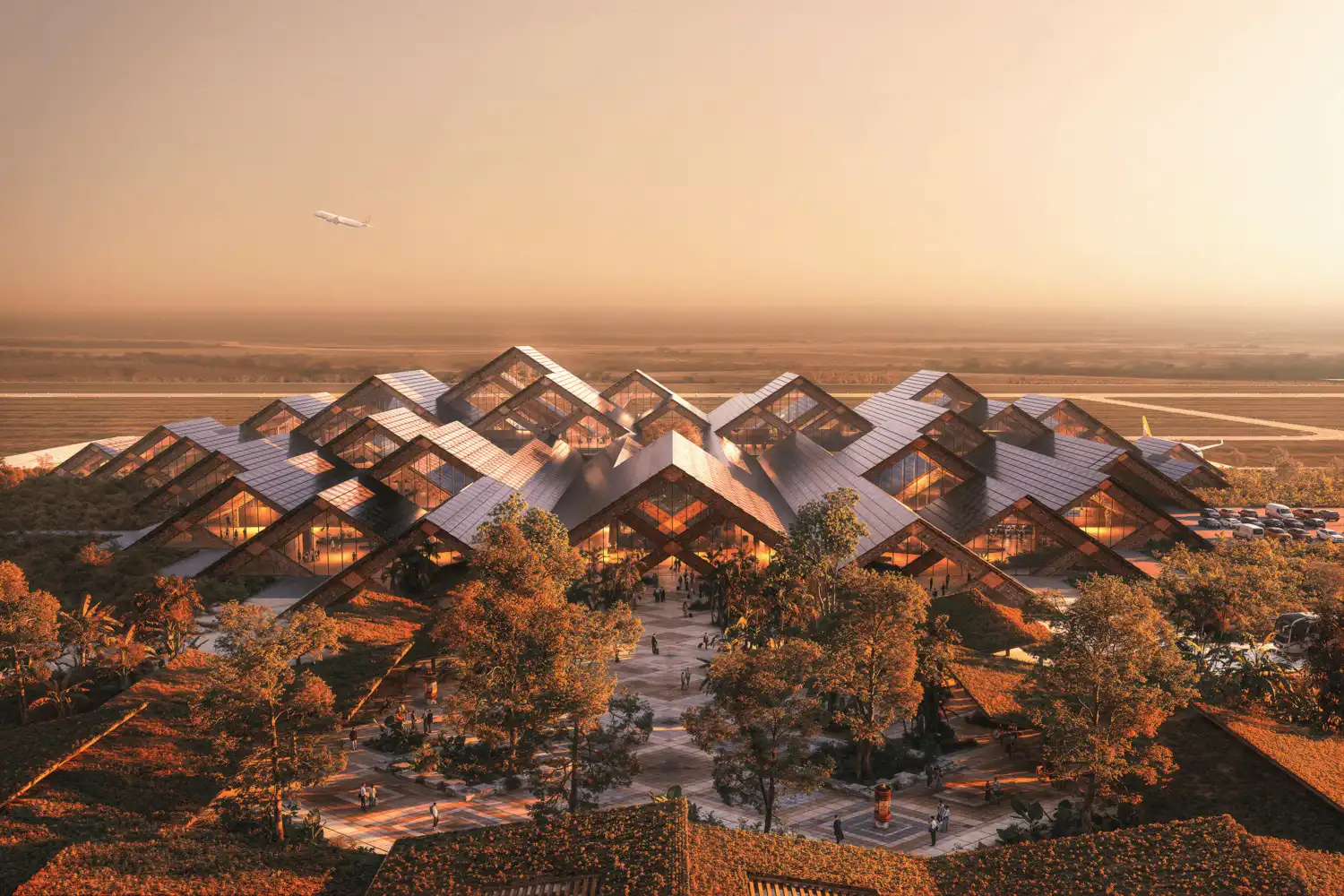























Leave a comment